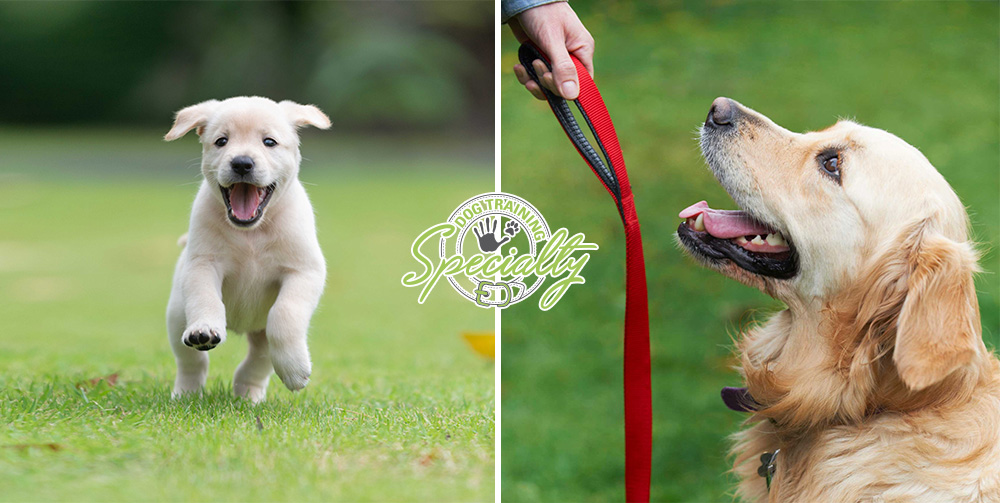Find the Best Dog Training Near Me for Effective Obedience and Behavioral Solutions
Find the Best Dog Training Near Me for Effective Obedience and Behavioral Solutions
Blog Article
Transform Your Pet's Habits With Proven Training Methods
Changing your canine's actions needs a nuanced understanding of their private traits and requirements, as well as the application of tried and tested training methods. By using positive support and identifying essential hints in their body language, you can properly address typical behavior concerns such as too much jumping or barking. Uniformity in your training approach not only boosts obedience yet additionally promotes a much deeper bond of trust and respect between you and your animal. Nonetheless, the path to successful improvement may present unexpected challenges that warrant more expedition.

Comprehending Pet Dog Behavior
Comprehending canine behavior is crucial for reliable training and communication in between people and their canine companions. Canines, as social pets, exhibit a variety of actions influenced by genes, setting, and experiences. Recognizing these actions assists proprietors customize their training approaches to satisfy the certain needs of their dogs.
Key aspects of pet habits include body language, vocalizations, and social interactions. Additionally, socializing plays a critical duty in forming habits; pets that interact favorably with different people and various other animals are normally more well-adjusted and adaptable.
Moreover, identifying stress signals-- such as evasion, panting, or pacing behaviors-- can stop escalation right into much more severe problems. Owners who are attuned to their dog's behavior can create a risk-free and caring setting, promoting count on and improving the training process. Eventually, a deep understanding of canine habits lays the structure for an unified partnership and efficient training outcomes, ensuring both canines and their owners flourish with each other.
Positive Reinforcement Techniques
Positive reinforcement techniques are commonly acknowledged as one of one of the most effective techniques for training dogs, fostering a positive knowing setting. This approach entails fulfilling wanted behaviors with treats, praise, or play, therefore urging the dog to duplicate those behaviors (Dog training). Unlike corrective methods, positive support builds depend on and enhances the bond between the instructor and the pet dog
Incentives ought to be given immediately following the wanted habits to aid the pet dog make the link. Consistency is also essential; making use of the same commands and benefits helps the dog understand what is expected.
It is essential to keep in mind that positive support is not about bribery; rather, it is about reinforcing excellent actions. With time, as the canine finds out to connect certain actions with favorable results, the regularity of benefits can be progressively reduced, transitioning to spoken appreciation or intermittent rewards. This approach not just motivates obedience yet also promotes a positive and delighted pet, making training a much more delightful experience for both parties entailed.
Attending To Typical Problems
Dealing with typical problems throughout pet training is crucial for making certain a successful and unified partnership in between the pet and its proprietor. Lots of pet dog proprietors encounter behavioral challenges, such as extreme barking, jumping, and chain drawing. Comprehending the root causes of these behaviors is critical for effective training.
Too much barking might stem from boredom, anxiousness, or a lack of socializing. To reduce this, give enough physical workout, psychological excitement, and opportunities for social interaction with both people and other pets. Jumping can often suggest exhilaration or a need for focus. Training the pet dog to rest upon welcoming can redirect this actions positively.
Leash pulling is one more common concern, regularly arising from a my explanation canine's passion to check out. Utilizing appropriate leash handling strategies, combined with training protocols that urge loose-leash strolling, can dramatically enhance this behavior.
On top of that, issues like resource safeguarding or separation stress and anxiety require tailored approaches. Progressive desensitization and counter-conditioning can be effective in attending to these challenges. By acknowledging and proactively managing these common problems, pet dog owners can promote an extra pleasurable training experience and reinforce the bond with their canine friends.
Consistency in Training
Uniformity is a cornerstone of efficient canine training, as it establishes a clear structure for the pet dog to recognize expectations and actions. When hints, commands, and incentives are applied consistently, dogs can much more conveniently understand what is required of them. Irregular training can bring about complication, causing unfavorable behaviors that frustrate both the fitness instructor and the dog.
To attain consistency, it is essential that all participants of the home stick to the same training approaches. For example, making use of the exact same verbal cues and hand signals makes certain that the canine gets uniform messages. In addition, the timing of corrections and rewards ought to be regular; instant support boosts the possibility that the pet dog will associate the habits with the end result.
Routine method sessions, combined with structured routines for feeding, strolling, and playtime, help pet dogs anticipate and recognize their setting, making them a lot more you could try this out receptive to training. Eventually, uniformity cultivates a feeling of security and count on, encouraging dogs to discover a lot more successfully.
Building a Strong Bond
Exactly how can fostering a solid bond between a dog and its owner boost the training experience? When a dog feels protected in its link with its proprietor, it is a lot more likely to display favorable habits and be responsive to discovering.

In addition, a well-established connection can decrease stress and anxiety and behavior problems, as pet dogs are less most likely to act out when they really feel understood and taken care of. As a result, focusing on the advancement of a solid bond not only boosts the training experience however additionally adds to a happier and extra well-adjusted dog. Ultimately, the journey of training changes More Info right into a collaborative collaboration, resulting in lasting behavioral improvements.
Conclusion

Proprietors who are attuned to their pet dog's actions can produce a risk-free and nurturing setting, promoting trust fund and boosting the training process. Eventually, a deep understanding of canine habits lays the structure for an unified partnership and reliable training end results, guaranteeing both dogs and their owners prosper together.
Addressing common issues during dog training is essential for making certain a successful and unified connection in between the pet dog and its owner (Dog training).Uniformity is a cornerstone of reliable canine training, as it establishes a clear structure for the canine to understand habits and expectations.In final thought, changing a dog's habits via proven training approaches requires an understanding of canine habits, the application of favorable support strategies, and an emphasis on consistency
Report this page